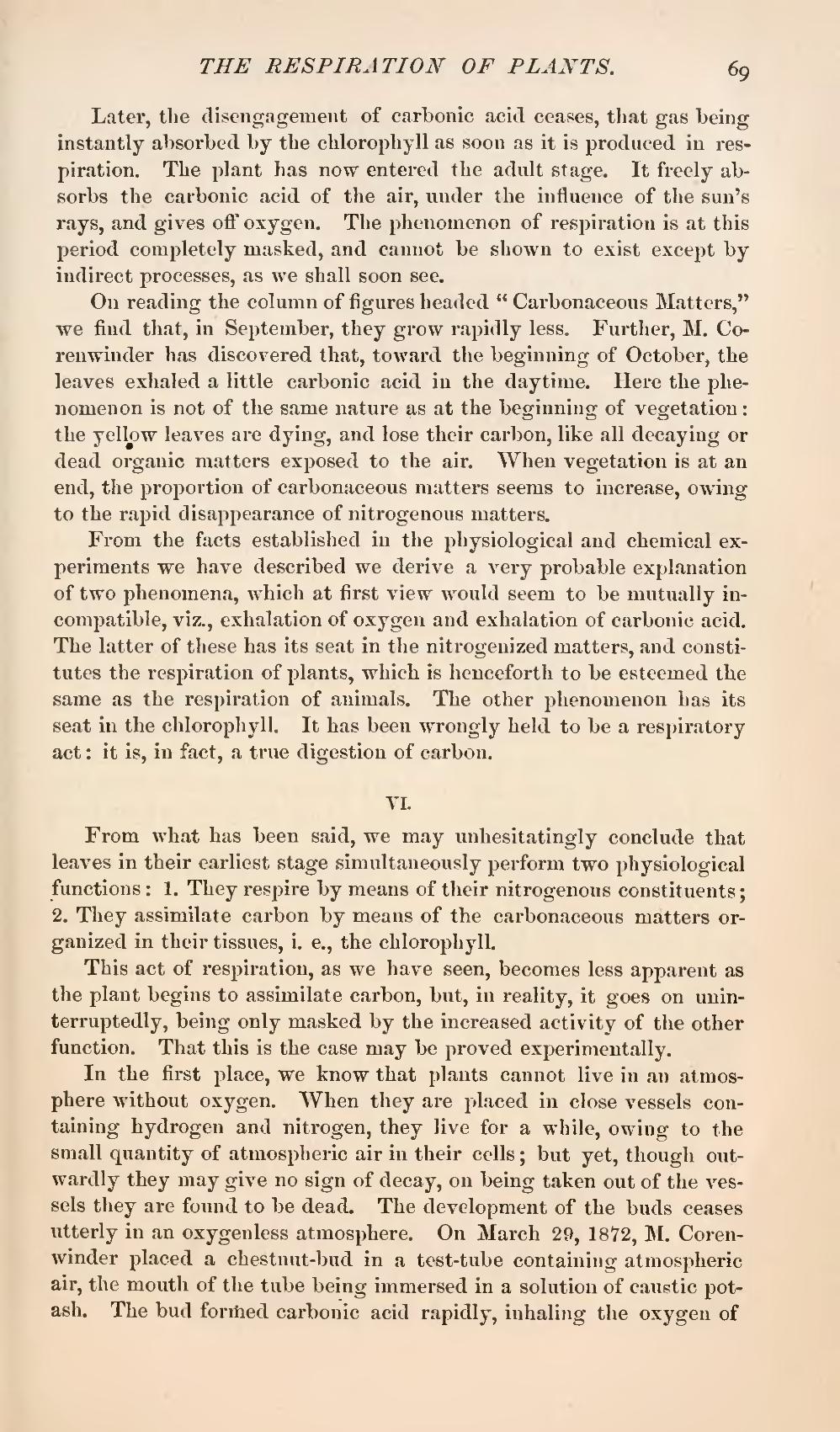Later, the disengagement of carbonic acid ceases, that gas being instantly absorbed by the chlorophyll as soon as it is produced in respiration. The plant has now entered the adult stage. It freely absorbs the carbonic acid of the air, under the influence of the sun's rays, and gives off oxygen. The phenomenon of respiration is at this period completely masked, and cannot be shown to exist except by indirect processes, as we shall soon see.
On reading the column of figures headed "Carbonaceous Matters," we find that, in September, they grow rapidly less. Further, M. Corenwinder has discovered that, toward the beginning of October, the leaves exhaled a little carbonic acid in the daytime. Here the phenomenon is not of the same nature as at the beginning of vegetation: the yellow leaves are dying, and lose their carbon, like all decaying or dead organic matters exposed to the air. When vegetation is at an end, the proportion of carbonaceous matters seems to increase, owing to the rapid disappearance of nitrogenous matters.
From the facts established in the physiological and chemical experiments we have described we derive a very probable explanation of two phenomena, which at first view would seem to be mutually incompatible, viz., exhalation of oxygen and exhalation of carbonic acid. The latter of these has its seat in the nitrogenized matters, and constitutes the respiration of plants, which is henceforth to be esteemed the same as the respiration of animals. The other phenomenon has its seat in the chlorophyll. It has been wrongly held to be a respiratory act: it is, in fact, a true digestion of carbon.
VI.
From what has been said, we may unhesitatingly conclude that leaves in their earliest stage simultaneously perform two physiological functions: 1. They respire by means of their nitrogenous constituents; 2. They assimilate carbon by means of the carbonaceous matters organized in their tissues, i. e., the chlorophyll.
This act of respiration, as we have seen, becomes less apparent as the plant begins to assimilate carbon, but, in reality, it goes on uninterruptedly, being only masked by the increased activity of the other function. That this is the case may be proved experimentally.
In the first place, we know that plants cannot live in an atmosphere without oxygen. When they are placed in close vessels containing hydrogen and nitrogen, they live for a while, owing to the small quantity of atmospheric air in their cells; but yet, though outwardly they may give no sign of decay, on being taken out of the vessels they are found to be dead. The development of the buds ceases utterly in an oxygenless atmosphere. On March 29, 1872, M. Corenwinder placed a chestnut-bud in a test-tube containing atmospheric air, the mouth of the tube being immersed in a solution of caustic potash. The bud formed carbonic acid rapidly, inhaling the oxygen of
